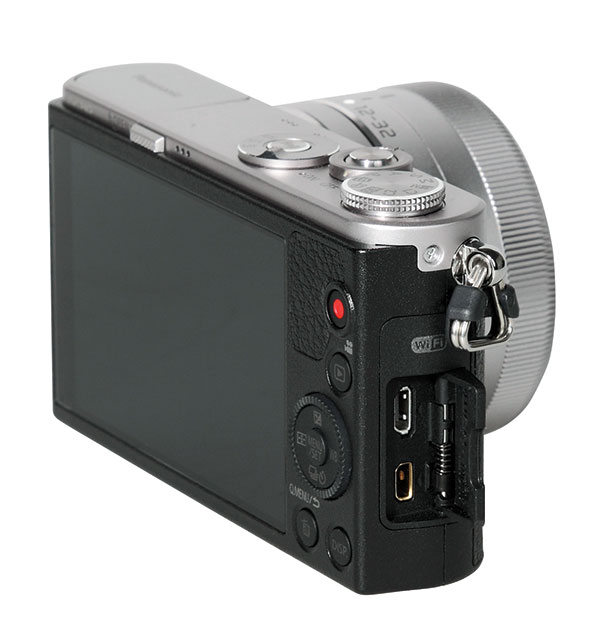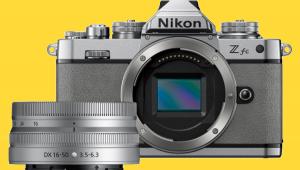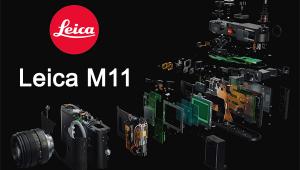Panasonic Lumix DMC-GM1KS Mirrorless Camera Review

[Editor's Note: Lab test and comments are by Betternet, Shutterbug’s TIPA-affiliated testing lab. TIPA (www.tipa.com) is a worldwide association of photo and imaging magazine editors. Shutterbug is the sole US member of the association, and Editor at Large George Schaub serves as a member of the Technical Committee. Please click on the Image Tech tab on the home page for more camera review tests.]
The Panasonic Lumix DMC-GM1KS is very small, even though it has an APS-C-sized sensor. The camera is smaller than Nikon’s 1 series and even a bit smaller than the Pentax Q series, which has a compact camera sensor.
The small body design of the GM1KS required a matching control system, so the camera has only three function elements on top—an On/Off switch, a shutter release button, and a button/switch which allows the user to choose between auto and manual focus and, via a center button, choose a user-defined function (Fn1). By default, this button is also used to start the Wi-Fi/WLAN configuration, which can be used for image data transfer or for a remote control.




The remote control software is available for Android and iOS phones and is very powerful. It shows a live preview on the screen of the smartphone or tablet computer and allows the user to set up nearly all image parameters as well as shoot both images and videos directly from the device.
On the back of the camera the user will find a standard four-way control field and a setup wheel that encircles this control field. The wheel is used to change numerous image parameters (shutter speed and aperture in M mode, for example). It can also be used for menu navigation. Due to the fact that the camera body itself has very few control elements, many functions are controlled on the touchscreen on the back. For example, when using manual focus mode, the camera shows a zoomed in part of the image on the screen (“screen loupe”) and the photographer has to push a virtual slider on the screen up and down to change focusing.
The Panasonic GM1KS is clearly designed as a point-and-shoot camera, in our view, using auto modes for exposure, setup, and focusing instead of offering handy controls and functional elements for individual control.
The 3-inch touchscreen is fixed (which is one reason for the very compact body design). It offers 1,036,000 RGB dots with very brilliant and crisp reproduction of the images and menus.

Image Quality
Color: The Panasonic GM1KS reproduced the color test chart with a perfect white balance. Blue nuances are boosted in an extreme way, although most other colors are very close to their given values. The mean/average saturation is only slightly high; the difference of 4.1 percent (mean saturation: 104.1 percent) is based mostly on the shift of the blue color.
Skin tones are reproduced nearly perfectly. The standard test box shot was also reproduced with a very neutral gray background and some oversaturation of the dark blue spool and color pattern, while all other colors have a more realistic look. However, in our portrait test shot the automatic white balance system caused a more bluish look even though the same light system is used for the portrait shot as well as the color test chart. However, skin tones and the red color of the T-shirt have a realistic look.

Sharpness: The camera showed an excellent performance in our resolution tests, which are nearly as good as the Panasonic GX7 results. It reproduced the test chart with 3122 lines per picture height, which is a remarkably high result for a camera with a nominal resolution of 3348 lines per picture height. It uses an intense sharpness filtering in its JPEGs, but the images still have a very realistic look—even though the overshot effects are very high (nearly 30 percent). Fine structures are reproduced with nearly no moiré effects or the typical artificial look of oversharpened images. The high sharpness is also noticeable in video mode, where the camera created very crisp and clear movies. Moiré effects are on a very low level.
Noise: The camera showed a good performance in our noise tests. The luminance noise level is very low (up to ISO 6400) and crosses the 1.0 percent barrier only at ISO 12,800 and ISO 25,600. Color noise artifacts become visible at ISO 1600. The low luminance and color noise results come from very intelligent filtering. It reduces noise artifacts with only a minor decrease of image details up to ISO 6400. At the highest ISO settings we noticed the typical anti-noise filtering effects—the “impressionism filter look” and “frazzled” contour lines.

The dynamic range tests show somewhat ambivalent results. The maximum of 11.7 f/stops is absolutely excellent, but the dynamic range becomes drastically reduced at higher ISO settings (under 10 f/stops at ISO 800 and higher).
Pro
+ Ultra compact system camera
+ High-resolution results (partially achieved by electronic filtering)
+ Fully compatible with the MFT system lenses
+ Many manual settings (P, S, A, M mode)
Con
- Missing accessory shoe
- Manual focusing is a bit tricky
- No swivel monitor
The Panasonic Lumix DMC-GM1KS with a 12-32mm kit lens has a list price of $749.99.
For more information and full specs, visit www.panasonic.com.
Image Tech is where we publish web-exclusive lab reports on cameras. To read the reports please go to the Shutterbug homepage at www.shutterbug.com and click on the Image Tech tab on the top navigation bar. New reports are published frequently, so check Image Tech for updates.
Lab results and test images by BetterNet, our TIPA-affiliated testing lab. Edited by George Schaub.
- Log in or register to post comments

















































